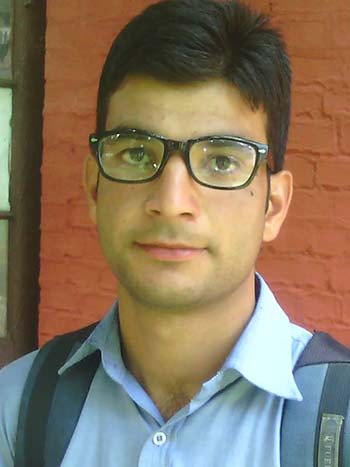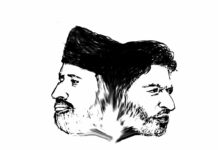Mohammad Ismayeel
 13th July, 1931, is most important day both historically as well as politically in the annals of Kashmir history. That day the struggle of victimized and subjugated Kashmiri Muslims against the oppressive Dogra rule began. And in the larger reality of Kashmir issue, the day laid the foundation of freedom struggle in valley.
13th July, 1931, is most important day both historically as well as politically in the annals of Kashmir history. That day the struggle of victimized and subjugated Kashmiri Muslims against the oppressive Dogra rule began. And in the larger reality of Kashmir issue, the day laid the foundation of freedom struggle in valley.
As twentieth century dawned, political consciousness gripped Kashmiri Muslims. They realised that their share in state services stands next to nothing. It was the time when outsiders were being recruited as civil servants in valley. Political freedom was totally nonexistent. Civil liberties like freedom of press, public opinion and political activity were almost snubbed during the first eight decades of the Dogra rule.
But the ban didn’t stop some Muslim graduates from Aligarh Muslim University to form a Reading Room Party, or, the Fateh Kadal Reading Room at the residence of Zia-ud-din. Within a short span of time, members of Reading Room created political consciousness among masses and laid the foundation of Kashmiri modern nationalization.
By mid-1931, rumours spread that Maharaja’s officials are mistreating Muslims and disrespecting Islam in Jammu. The report that elicited the most vituperative reaction was of a Hindu police constable who had prevented a Muslim subordinate from offering his prayers. The constable had thrown the copy of the Holy Quran to the ground.
As the word of the constable’s actions reached Srinagar, sense of anger and agitation brewed. Another incident followed: the Eid Sermon of a Maulvi was restrained. And then, in a village called Digore, Muslims were denied permission to offer prayers on a certain piece of land. All these incidents fanned the tension. A cry “Islam in danger” pitched by Kashmiri Muslims spread like a wild fire across the state.
Big gatherings at different religious places started assembling; particularly, at Srinagar’s Jamia Masjid. In one such gathering at Srinagar’s Khanqah-i-Maula on June 21, 1931, people gathered to elect their representatives. Seven prominent workers were elected as people’s spokesmen: Khwaja Saad-Ud-Din Shawl, Mirwaiz Yousuf Shah, Mirwaiz Attiqullah Hamdani, Aga Syed Hussain Shah Jalali, Khwaja Gulam Ahmed Ashai, Sheikh Mohammad Abdullah and Munshi Shihab-ud-Din.
At the end of the Khanqah-i-Maula meeting, an outsider, Abdul Qadir, the pathan servant of a European vacationing in Kashmir delivered an inflammatory speech. He was promptly arrested for this.
On 13th July 1931, when Abdul Qadir was taken to Srinagar’s Central Jail, a crowd was attempting to enter the jail to protest his prosecution. In retaliation, the Hindu officials fired into the gathering and killed 21 persons. After the firing incident, tension fanned across the state. Since then, 13th July is being observed as Martyrs’ Day by Kashmiris.
July 13, 1931, is a landmark in Kashmir history. From this day, the struggle for independence started in a very organized manner. No doubt, there had been demonstrations in Kashmir earlier against the Dogra rule, particularly, by the Shawl weavers and by the peasants. But never before had the entire Muslim population risen as one against authorities.
Unnerved by the political developments, Hari Singh (1925-1947) appointed the commission under the chairmanship of Sir BJ Glancy of the Foreign and political department of the Government of India to access the grievances of Kashmiri Muslims.
The report of the commission was published in April 1932. It was a document of great historical importance as it acknowledged in a true historical perspective the appalling discrimination of the state towards the majority of its ruled people. Besides other things, the commission recommended that the measures should be adopted for the educational development of the Muslims.
The author is the student at AS College Srinagar.















